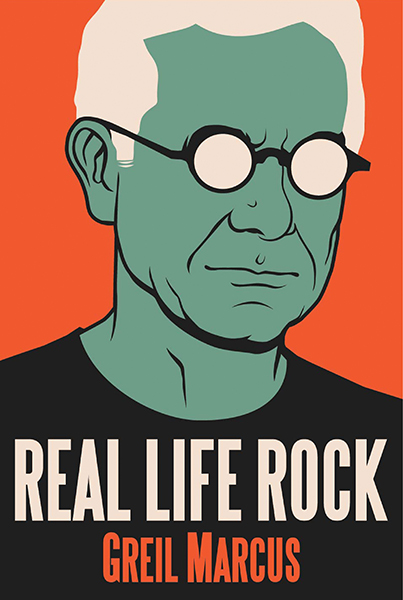
Greil Marcus may be the best known rock critic going—he’s famous for his insights but not for concision. His 2014 book, The History of Rock ‘n Roll in Ten Songs, opens with a five-page run-on. His sentences can be gorgeously knotty, their structure mimicking the circuitous cultural connections. But threaded throughout his work—which includes seminal books such as Mystery Train and Lipstick Traces and editorial roles in collections such as Lester Bangs’ Psychotic Reactions and Carburetor Dung—is a parallel interest in short takes. At the end of the anthology Stranded, for instance, Marcus allots himself only short blurbs on dozens of his favorite albums. It’s a thrilling read. For the last 30 years, Marcus’ main outlet for snappy missives and compact criticism has been the "Real Life Rock Top Ten" column. Recently anthologized in the 500-page Real Life Rock, the column premised on brevity amounts to a great big tome.
"Real Life Rock Top Ten"—which started at The Village Voice, appeared in both Art Forum and The Believer, and currently resides at Barnes & Noble Review—takes in songs, books, movies, and most other imaginable artifacts. It reads like a catalog of the critic’s quotidian consumption, placing side-by-side subjects salvaged from the gutter, be they years-old budget editions or the newest hype. Marshaled under headings, they’re listed one-through-ten and accompanied by assessments that range from punchy fragments to a few paragraphs. Real Life Rock redeems the list format from the current proliferation of "listicles"—and paces it as a thing cultural consumers have always employed for sanity, a way to force some order into an insatiable and unwieldy habit.
The seemingly discrete items in a given column do interact with one another, but Real Life Rock amplifies the sense of teeming conversation. Marcus bickers with statements in song titles and teasingly answers questions posed by lyrics. He’s floored by the Geto Boys’ debut; solo statements from the individual rappers dapple the following pages. He asserts that Beat Happening "invents punk rock"; ensuing indie pop reviews remain at that pitch (though Marcus never uses reductive genre tags). He loves the Fastbacks, who refuse to change, and dismisses the Jesus and Mary Chain’s every left turn. Readers looking for validation or bones to pick will find both (on Courtney Love: "Too theatrical to wound.") and for those purposes Real Life Rock is a useful reference, but there are more urgent takeaways.
It’s a good time for this book: Real Life Rock reminds skeptics that capsule reviews have a long and rich tradition. Indeed, the earlier, shorter installments, bound to printed periodicals’ stringent word-count, pressure Marcus into the best kickers: "…pop Stalinism, or the kind of revisionism you can find in textbooks on American history." Also: "Fuck off and die, cretins." (It’s easy to miss his scabrous bent in the later Believer installments.) Of the Sonics, he writes, "This might have taken longer to record than it does to play," coolly summing the sense of bottled urgency that characterizes the best of the band’s every garage descendent. Resonant commentary doesn’t require voluminous exegesis.
But one of the most instructive implied arguments of the whole text regards intention. Commending an album by the Art Bears in lyrical, evocative prose, Marcus withholds until the end that he’d actually reviewed it on the wrong speed, listens again at the correct setting, and concludes that he liked it best the first time. Today, reviewers’ critical assessments very often hinge on artists’ biographies or industry standing, making Marcus’ book a sobering and provocative reminder that such details, though illuminating as journalism, are somewhat superfluous to listening. And fixating on music at the level of sound is crucial to the imaginative way he careens through the shadowy margins of history in other books. To consider songs’ many lives and unintended ramifications, he lets their authors go.